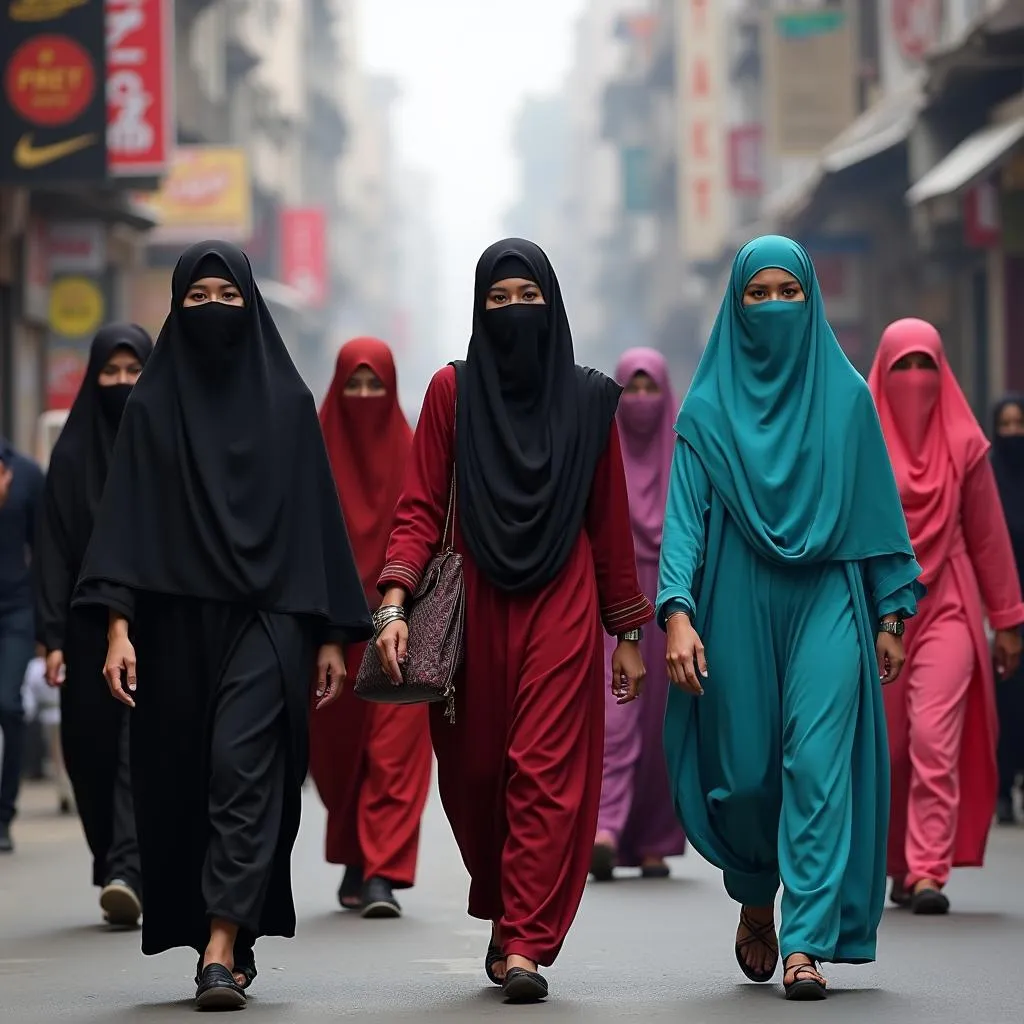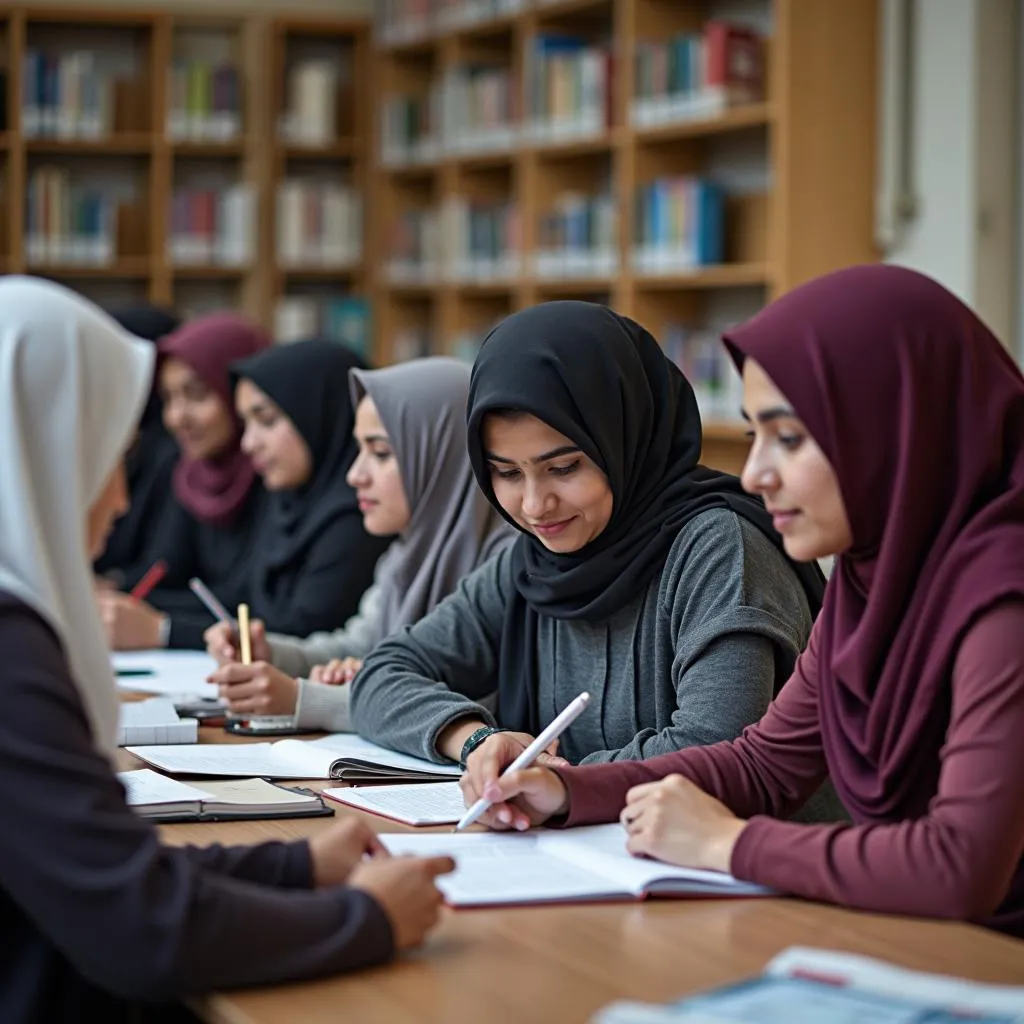The burqa, a full-body garment that covers the face and body, holds a significant place in the cultural landscape of Pakistan. While often associated with Islam, its presence in the region predates the arrival of Islam, reflecting a complex interplay of cultural, religious, and societal factors.
A Tapestry of Influences: Understanding the Burqa’s History in Pakistan
The burqa’s history in Pakistan is not monolithic; it’s a story woven from various threads. Some historians trace its roots back to the Persian Empire, where veiling was prevalent among elite women. Others point to the influence of the Mughal era, during which the burqa evolved into a symbol of modesty and seclusion for women of high status.
The Burqa and Islam: A Complex Relationship
While often perceived as a religious mandate, the burqa’s relationship with Islam is nuanced. The Quran, the holy book of Islam, encourages both men and women to dress modestly, but it does not explicitly prescribe the burqa. Different Islamic schools of thought interpret these guidelines differently, leading to varying perspectives on the necessity and form of veiling.
 Women in Pakistan wearing burqas
Women in Pakistan wearing burqas
Choice or Compulsion? Navigating the Spectrum of Perspectives
The question of whether women choose to wear the burqa or are compelled to do so is a subject of ongoing debate. For some women, the burqa represents a personal choice rooted in religious devotion, cultural identity, or a sense of comfort and security. They view it as a symbol of their faith and a means of expressing their spirituality.
Others, however, argue that societal pressures, cultural norms, and family expectations influence women’s decisions, making it difficult to disentangle genuine choice from external influences.
The Burqa in Contemporary Pakistan: Evolving Norms and Societal Views
In modern-day Pakistan, attitudes towards the burqa are evolving. While it remains a common sight in many parts of the country, particularly in rural areas and conservative communities, its prevalence varies across different social classes, educational backgrounds, and geographic locations.
 Pakistani women studying in a university library
Pakistani women studying in a university library
Beyond the Fabric: The Burqa as a Symbol and a Conversation Starter
The burqa, much more than a piece of clothing, has become a symbol laden with meaning and open to interpretation. It sparks conversations about religious freedom, women’s rights, cultural identity, and the complex interplay between personal choice and societal expectations.
Conclusion: Understanding the Burqa in its Full Context
The burqa in Pakistan is a multifaceted subject that defies simplistic explanations. Understanding its historical context, religious interpretations, and the diverse experiences of women who wear it is essential for engaging in meaningful dialogue and fostering greater understanding and respect across different perspectives.